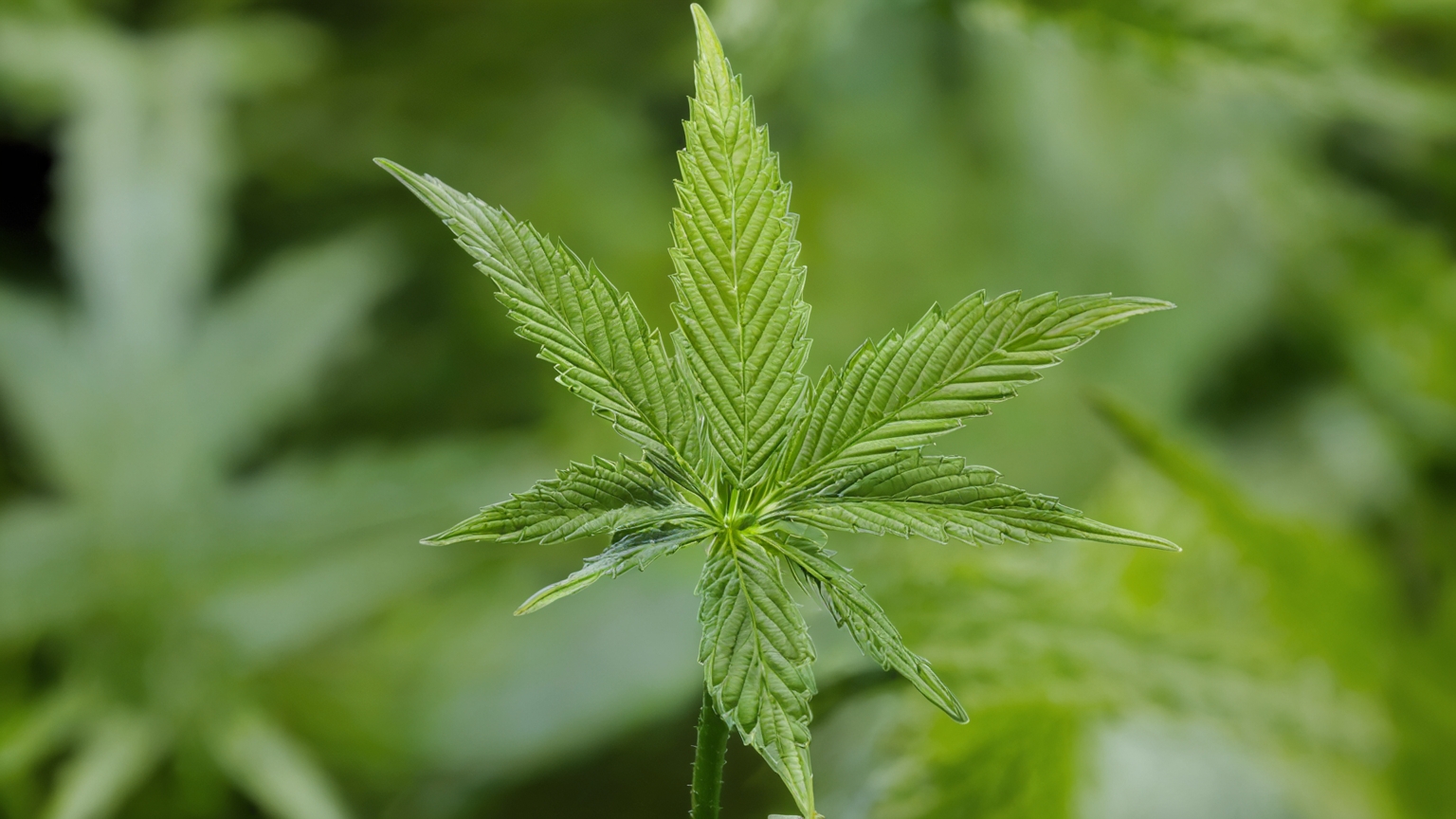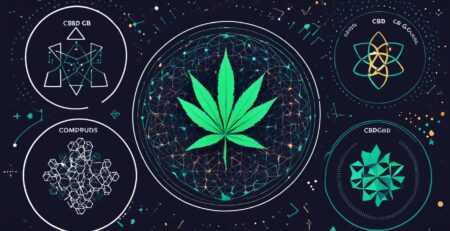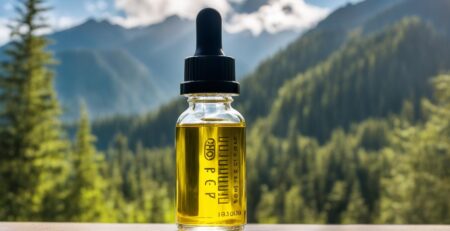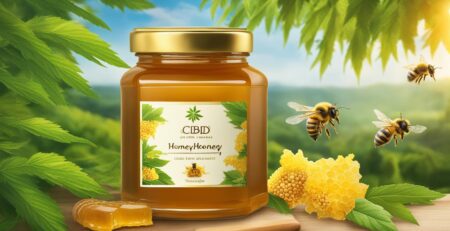History of Cannabinoid Research and What’s to Come
Hello thanks for coming to the meeting. I will try in the next few minutes to present an overall view of cannabinoid research as has been done in my laboratory and in many other laboratories as well over the last decade. When we started work actually in the 1960s there was essentially no major interest the matter of fact I asked for a grant and I was told when you have something more relevant to what's going on contact us.
Well, it turned out that cannabis was relevant and indeed over the last few years it has become so relevant that most of the major journals have numerous articles and reviews. Nature last year had four reviews on cannabinoids and the reason for that is that cannabinoids various cannabinoids have turned out to be a major interest in many diseases. As a matter of fact, a few to researchers at NIH, Dr. Kunis and Dr. Popper wrote a review in which they mentioned that cannabinoids, the cannabinoid system is involved in most human diseases. Now, this is a very strong statement but it seems to be correct and they give a lot of examples. So that's probably the major reason why so many people, so many journals, so many companies are interested in cannabinoids
today.
Let's start with cannabinoids as medicine. Cannabinoids as drugs have
been used for thousands of years. In Assyria, they were used apparently for neurological diseases, but over the years it was used in many other ways. Queen Victoria, for example, had cannabis brought to her from India for the migraines she suffered from. This went on for thousands and thousands of years until because of legal reasons cannabis was taken off the various pharmacopeias.
Nowadays it is coming back and this is due to a large extent to the research being done over many many years now by many many many groups and a few companies as well. Now let me try to tell you where we stand today. I believe that we have passed through three stages of cannabinoid research. The research in the 60s and 70s at least in our laboratories was mostly on the plant cannabinoids.
Surprisingly the major active psychoactive cannabinoid had not been isolated in pure form although some very good groups both in the US and the UK had worked on it. This is due to the huge mixture of compounds that were present in cannabis. It was difficult at that time to isolate pure compounds from such a mixture. Well in the 60s we were able to isolate the active psychoactive material Delta 9 THC and to identify, to elucidate its structure and then to synthesize it.
Now this compound, of course, has been the object of thousands of papers but there also many additional compounds. We isolated about a dozen and here are some of the compounds you can see on the slide and there are quite a few others. Today we know that there about hundred-and-twenty natural plant cannabinoids most of them present in very small amounts. The major compounds are as I said a THC
tetrahydrocannabinol and Cannabidiol, which is not psychoactive.
Actually, neither THC or CBD are produced by the plant. The plant produces CBDA and THCA which you can see on the next slide. These compounds decarboxylate and form CBD and THC. When they're still on the plant or in the cannabis mixture which has been extracted. So as these two compounds are not stable very little work has been done with them. Recently we were able to stabilize these compounds by making them into their methyl esters and we found that these compounds are actually pretty potent. In collaboration with colleagues in the UK in Canada in Italy and in the US. We found that these compounds are anti-anxiety compounds. We found these compounds lower nausea and vomiting and I believe that these compounds will be investigated further over many years.
Now before I go ahead with a plant cannabinoids I want to mention that the activity is not the same in all extracts, which seem to have or the same amount of the psychoactive material of THC. Because some of the compounds present in the mixture affect the effects that being that we see from THC and this we called entourage effect. It's some of the effects of THC, affected by the other entourage compounds, but not all effects are. We have to undertake or to go ahead with a lot of research to find out where and how the entourage effect works.
But let's go and a look at the effects of THC which are well known. I will not go into details, we know that THC and in addition to its psychoactivity, blocks vomiting, blocks nausea. We know that it is quite effective in treating post-trauma patients. Particularly in letting them sleep better. Post-trauma patients who have many problems sleeping and so there are quite a few other effects and that's one of the reasons why people use THC in their cannabis protocols.
Over the last few years it has been found that the medicinal value of cannabis is probably mostly due to cannabidiol. A compound that was isolated in the 30s. We elucidated its structure in the 60s and looked at some of its pharmacological and clinical effects and over the last decade there has been a huge amount of work on cannabidiol and we seem to know quite a bit on it and I'll just mention a few of them effects that we know about cannabidiol.
One of the first effects we looked at was the fact of cannabidiol and epilepsy. This was done in collaboration with a South American group. We first of course looked into models of epilepsy in animals, we saw that it is very effective. We then did a clinical trial, that was 35 years ago. We found that in adult patients, about 12 adult patients, we had in a double-blind study that it is very effective. In patients that were treated with anti-elliptic drugs, but were not showing any improvement we found that in four of the eight patients that got cannabidiol, they had no attacks whatsoever. For a few months, three of them had just a few, and only one was not affected. Unfortunately, these results were not taken up by the medical profession and for nearly thirty years and nothing happened.
A lot of people, a lot of children could have been helped! but they had to wait until many parents found that cannabis with a lot of cannabidiol helps their children. I'm glad to see that today compound mixture and extract from cannabis which contains essentially only cannabidiol has been tested in epileptic children and the results show that our small trial 35 years ago was correct and it cannabidiol helps in epilepsy. In Israel there are about a hundred children that get cannabidiol. Actually, a mixture of cannabidiol and THC in a ratio of 20 to 1 and they are helped by this extract. Epilepsy, as you know, maybe a terrible disease, especially in children and it may stop their development and it ruins the child and It may ruin the family.
Another aspect that has been looked into in Israel is graft-versus-host disease. This is a kind of an autoimmune disease, namely if the bone marrow in cancer patients has to be replaced by bone marrow from outside. The body attacks the bone marrow, the bone marrow attacks the body and the person may be quite ill. It was found by a group of clinicians in one of the hospitals in Israel that cannabidiol can lower prevent help with graft-versus-host disease and this is now being developed by a commercial company. I hope that it will become a drug against graft-versus-host disease in the next few years.
There are quite a few other diseases that cannabidiol helps, most of them are still in the preclinical stage. There are quite a few diseases in which the body attacks itself, autoimmune diseases for example. Diabetes type one we found that in a model which is quite relevant to the human disease we found that cannabidiol is very helpful in diabetes type 1. This is a disease in which the body attacks the cells that produce insulin and the body does not have enough insulin. Usually one sees that in children starting with children and we found that cannabidiol is very potent. Unfortunately, nobody has tried this on human patients.
Now, this was essentially a summary a few words on the work that was done on the plant cannabinoids but since then research has moved into a second direction. The plant cannabinoids were thoroughly investigated for nearly twenty years from the 60s till the end 80s and we got to know a lot about the chemistry, pharmacology, and physiology. One thing was not known and it was the mode of action and in the 80s a group in St Luis. Dr. Howelt found that there is a specific receptor for the cannabinoids and this is the main mode of action of cannabinoids, or particularly of THC acting through a receptor. She called this cannabinoid receptor number one, and later a second receptor was found. The first receptor cannabinoid intercepts the number one or CB1 causes the well-known effect of cannabis. The stimulation of CB 2 does not cause all these effects. Actually It is a kind of an immune mode of action. It helps the immune system in various ways.
THC binds to both CB1 and CB2. Cannabidiol does not bind essentially to either CB1 or CB2. Receptors don't exist in our body because they have to be activated by plant material. They exist because they have to be stimulated or suppressed by compounds that we produce. So in the late 80s early 90s we started looking for the endogenous compounds that stimulate these receptors. In 1992 and then in 1995 we found two endogenous compounds made in our body, and in the brain and the periphery. These compounds we called Anandamide and the other one is called 2AG. These compounds are chemically completely different from the plant material, although they act essentially in the same way as THC, except that there are enzymes in the body that break them down as soon as they have acted, while THC stays for quite some time. In the body these compounds formed when and where needed and then they are broken down. We do not see many of the effects that we know it THC.
I will not speak about the biochemistry of these compounds except for one thing. As I said they are not in the body until they are needed. They form when needed then they pass from one part of the synapse to the other part of the synapse and there they activate the receptor and affect the production or affect the action of many of the neurotransmitters that we know. This is one of the modes of action of these compounds, but in addition, they have actions of their own.
Now, this is the second stage of cannabinoid research as I see. There has been a lot of work on Anandamide as a neurotransmitter, there has been a lot of work on 2AG and together with a collaborator at the Hebrew University professor St Shami. We looked at the effect of 2AG on brain trauma. So in brain trauma, 2AG goes up in concentration, goes up tremendously. So we thought that this is because the brain has been damaged and some things are not needed? Or it is an actual reaction of the brain to the trauma trying to lower the effect of the trauma. And indeed we caused damage to the brain of mice and we looked at the effects of a 2AG and we found the 2AG indeed lowers the effects of the trauma. This is probably one of the main reasons for its production after the trauma.
These compounds have a lot of other effects and I will try to say a few words about them. It has been found for example that stimulation of CB2 has very positive effects on diseases of the heart, in atherosclerosis. In quite a lot of effects that have to do with inflammation, rheumatoid arthritis for example. It has been found to affect neurodegenerative diseases and of course as we well know, it has effects on pain. Surprisingly these effects have not been looked into in human patients. With pure 2AG or compounds that act on the CB2 receptor alone.
Although as I said previously the CB1 receptor has to do the psycho activity and quite a few other things. CB2 does not have to do anything with the psychoactivity. So we can have an opening to new drugs. Drugs that act on the CB2 alone and although such compounds are well known, we have synthesized several of these. They have not been introduced in the clinical practice, I really have no idea of why. Because here we have an opening, these compounds are normally non-toxic. They have very positive effects, and I hope that within the next few years and we shall see drugs based on specific activity on CB2. I'm aware that a few companies are working on specific CB2 agonists.
Now I want to go to the third stage of activity. We found that some of the actions of cannabis extracts cannot be a fully explained by the plant cannabinoids and so we thought that maybe there are additional compounds present in the plant, present in our body, that have to do with the medical effect or the clinical effects we are seeing in in mice. So one of the effects that we looked into was vasodilation. We know that on brain trauma some of the blood vessels are vasorestricted, that not enough blood goes to some places in the brain. Cannabis definitely affects this vasoconstriction. But it could not be explained fully with Anandamide and 2AG. So we went ahead looking for a compound of compounds that act on this vasodilation, and indeed we discovered that a compound very closely related to Anandamide acts and causes the vasoconstriction, and it is a vasodilator, and the compound is really essentially of the same type as Anandamide. Anandamide is a fatty acid called Arachidonic acid bound to Ethanolamide. Here we have our hedonic acid bound to an amino acid. So we went ahead looking for the activity of this type of compounds and this I believe is now the third stage of cannabinoid research.
Our body produces more than 100 compounds of this sort, fatty acids bound to an amino acid. Now these compounds, we know very little about their activity. I don't believe that the body synthesizes them just for the fun of it. Most probably it has something to do with specific effects in the body. So we went ahead looking for the activity of these compounds and this research was always done in collaboration with biologists and in specific fields.
One effect which we found to be due to compounds closer to anandamide is bone remodeling. It was well known that women in the Mediterranean region have less osteoporosis than women in northern Europe, for example. The suggestion was made that olive oil has to do with that. Women in the Mediterranean region consume more olive oil than women in northern Europe. In the food, there is a lot of olive oil being used in Israel and all the countries around the Mediterranean region and is it possible people said that it is the olive oil that has to do with the lower osteoporosis that we see. So we went ahead looking for the compound that causes this effect and this was done in collaboration with the late professor Bob who did all the work on both in vitro and in animals and we found that there is a compound that's produced in the body and which is closely related to Anandamide. This compound is indeed a derivative of oleic acid and when administered, we isolated and found the structure and synthesize it, and when this compound was administered to mice that had osteoporosis, and we could we had a model for osteoporosis in mice. We found that yes indeed it helps build the bones back.
You can see in the slide that I'm showing at the present that a few months after under certain conditions mice develop osteoporosis. You can see that in the red on the slide. We start giving them the compound we found. Olcoyl serine we found that this compound not only blocks further destruction, but it also helps with the bones being formed again. Now this effect may have very very high clinical importance and indeed a company is developing a compound based on Olcoyl serine, a derivative and I hope that it will become a drug within the next few years.
Over the last few months, we have been working on addiction. “We” means a group of four research groups, in addition to ours. A group in Richmond Virginia, a group in Canada and a group in Italy. We sat together at one of the meetings, discussed the possibility that addiction is a disease which causes changes in our body, in our brain. This disease probably can be treated, after all, our body tries to prevent disease, our body tries to fight against the disease. Is it possible, in addiction, our body tries to prevent addiction, tries to lower the effects of addiction? Well, the answer is yes, we believe that this is definitely so. There was a publication that a person who is strongly addicted to smoking cigarettes, to nicotine. When he was involved in a traffic accident that caused damage to a certain part of his brain he stopped being addicted.
So we thought that this is a good starting point to see how we can affect addiction, and we tried this in mice. We took mice, and cause damage to that particular part of the brain insula called. And we looked at the changes taking place there in the insula, and we found that the insula after damage starts producing an Anandamide related compound which it was possible to isolate, identify, elucidate the structure and synthesized.
It turned out to be Oleoyl glycine again. A fatty acid bound to an amino acid very closely related to Anandamide. So this compound Oleoyl glycine was administered to the mice and it prevented addiction, and it prevented withdrawal with those symptoms of both nicotine addiction and opiate addiction again in mice. It did not prevent the formation of addiction to heroin or morphine. So we know now there are different ways our body reacts to addictions and so we have to look for additional compounds that will act on cocaine addiction, or that may act on opiate addiction. But here we know for the first time, I believe that they are compounds formed in our body which work in this case at least against nicotine addiction. So we believe that many of the other compounds that are found of the same type have activities and we have to find out what these activities are.
Well, thank you very much I would like to summarize what I said in a few words. The first research on cannabinoids was obviously on the plant cannabinoids we learned a lot about THC, cannabidiol and the acids. The second stage was on the endogenous cannabinoids, anandamide, and 2AG. Which are of major importance in our metabolism and that affect our body, or the way our body tries to lower and prevent disease. And the third phase of the study is the formation in our body of a huge number of compounds, many of which seem to be of major importance in various diseases. I hope that we shall continue research on the cannabinoids and I'm glad to see that so many people are interested in this field. Thank you.











Leave a Reply